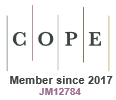Just Accepted
This article has been peer reviewed and accepted for publication. It is in production and has not been edited, so may differ from the final published form.
Effects of by-product feed inclusion in a grass hay-based diet on nutrient disappearance, total gas and CH4 production rumen fermentation and protozoal populations in an artificial rumen (RUSITEC)
Abstract
Context: Dietary manipulation can reduce enteric methane in beef cattle but limited options exist for perennial forage-based diets. Aims: An artificial rumen system (RUSITEC) was used to assess the effects of including quinoa screenings, flax screenings, and sunflower screenings in a grass hay-based diet on nutrient disappearance, total gas production (GP), CH4 production, ruminal fermentation, and protozoa populations. Methods: The experiment was a randomized complete block design with four treatments assigned to 16 fermenters (n=4/treatment) in two RUSITEC apparatuses. The Control diet was grass (Timothy) hay only, with by-product treatments of grass hay plus quinoa screenings (Quinoa), flax screenings (Flax), or sunflower screenings (Sunflower) at inclusion rates of 21.4, 11.2, and 12.3% diet DM, respectively. The study was 15 d, with 8-d adaptation followed by a 7-d sample collection period. Data were analyzed using PROC MIXED in SAS with fixed effects of treatment, day of sampling (repeated measure), their interaction and with RUSITEC and fermenter as random effects. Key results: Compared to Control, the inclusion of Quinoa and Flax had no effect (P> 0.05) on dry matter (DMD) or organic matter disappearance, however these were lower (P<0.001) with Sunflower. Sunflower and Quinoa did not affect (P>0.05) rumen fluid propionate production compared to Control; however, propionate production was increased (P<0.05) with Flax. Additionally, Sunflower decreased (P=0.044) rumen fluid acetate production as compared to Control, Quinoa and Flax. Sunflower, compared to Control had fewer (P<0.05) protozoa. There was no effect (P>0.05) of by-products on GP (L d-1); additionally, CH4 of Quinoa or Flax incubated did not differ (P>0.05) from Control. Sunflower, reduced (P<0.05) CH4 (mg g-1 DM incubated and mg g-1 DMD) by 42% and 31%, respectively. Quinoa and Flax had similar CH4 production (mg g-1 DMD; P<0.05) to Control whereas a 31% reduction (P>0.05) in Sunflower was observed. Conclusions: This study suggested sunflower screenings have the potential to decrease CH4 when included in a grass hay-based diet. Implications: Methane reduction was accompanied by reduced DMD, therefore animal performance may be negatively impacted. Although Quinoa and Flax did not reduce CH4 production, they demonstrated potential to supplement hay-based diets without decreasing DMD.
AN24186 Accepted 27 May 2025
© CSIRO 2025



